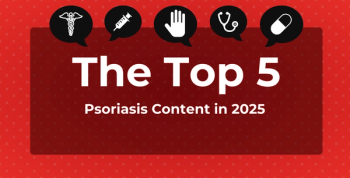
Firearms' Role as Driver of High Rural Suicide Rates Indicates Prevention Opportunities
A new study in the American Journal of Public Health finds that rates of suicide by firearm were more common than non-firearm suicides in the most rural areas.
A new study finds that the higher rates of suicide in rural areas are largely because more men in these areas use firearms as a method to commit suicide. The disparity supports the importance of gun dealers as a key ally for public health advocates hoping to prevent suicides.
Data indicate that rural US counties have significantly higher rates of suicide than urban ones, at 19 per 100,000 in rural areas compared with 11 per 100,000 as of 2015. Prior studies have found that suicides by firearm tend to predominate in these rural settings, but researchers from the Johns Hopkins School of Public Health set out to quantify the variations in urban and rural suicide rates by method (firearm vs non-firearm). Their
The researchers chose to conduct the study in Maryland, both for its accurate and thorough suicide data and its selection of representative rural and urban communities. The study sample included 6196 Maryland residents aged 15 or older who had committed suicide between 2004 and 2015. Census data was used to calculate suicide rates by county, broken down into firearm and non-firearm, which were then adjusted for sex, age, and race/ethnicity.
As the majority of Maryland residents live in the densely populated metropolitan counties, the majority of suicides, both by firearm and not, occurred in these urban areas. However, the distribution of suicide method varied between the most urban and rural counties. In metropolitan areas with more than 1 million residents, it was more common for a suicide to be committed without a firearm, whereas firearm suicides were 53% more common than non-firearm suicides in the most rural areas.
Overall suicide rates were 35% higher in the most rural counties compared with the most urban, which was driven by a 66% higher firearm suicide rate, as the difference in non-firearm suicide rates was not significant.
The researchers also found that this pattern was driven by men, who were at higher risk of overall suicide in rural areas. Male suicide by firearm was 36% higher in the most rural areas, but non-firearm suicides among men were comparable between the most rural and urban areas.
Rural women, meanwhile, had 37% lower rates of overall suicide and 40% lower rates of non-firearm suicide compared with urban women, and rates of firearm suicides among women did not significantly differ by county type. These findings are consistent with research showing men are more likely to use firearms to commit suicide than women.
These findings may be due to the wider availability of guns in rural areas, the study authors suggested, but their study did not control for variations in accessibility across counties. While the factors playing into rural—urban suicide disparities may be unclear, research points to several promising interventions that may be able to reduce the rates of suicide by firearm.
For instance, a
According to the recent study’s lead author, Paul Sasha Nestadt, MD, initiatives like these can make all the difference in eliminating the opportunities for suicidal people to follow through on their intentions.
“It is often said that people would kill themselves anyway, even if they didn’t have access to guns. There is an entire body of research that tells us that is simply not true,” Nestadt said in a
Newsletter
Stay ahead of policy, cost, and value—subscribe to AJMC for expert insights at the intersection of clinical care and health economics.








































